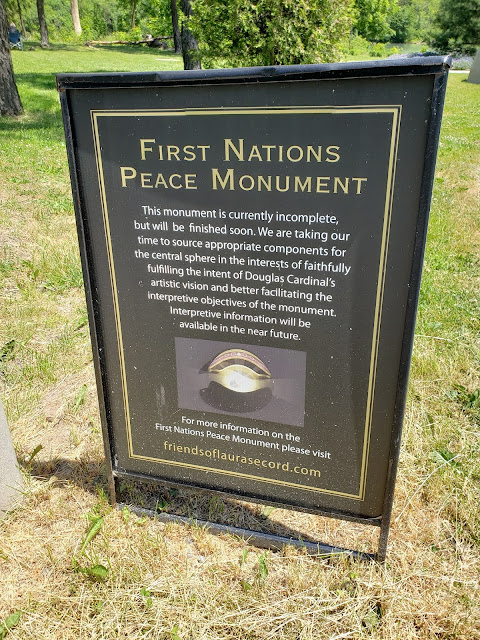June 2020 - Niagara Region ON
Welland ON
Niagara Wine Region Part 1
St. Catharines
June 2020 - St. Catharines ON
We had started out with continuing our Niagara Wine Region tour. Which we did get to later in the day, but first we headed to St. Catharines for lunch.
St. Catharines is the largest city in Canada's Niagara Region and the sixth largest urban area in Ontario. It lies in Southern Ontario, 51 kilometres (32 mi) south of Toronto across Lake Ontario, and is 19 kilometres (12 mi) inland from the international boundary with the United States along the Niagara River. It is the northern entrance of the Welland Canal. Residents of St. Catharines are known as St. Cathariners. St. Catharines carries the official nickname "The Garden City" due to its 1,000 acres (4 km2) of parks, gardens, and trails.
St. Catharines was the final terminus on the Underground Railroad for hundreds of slaves in the 1820s. The Underground Railroad and Niagara's Freedom Trail was a network of people who hid and guided black slaves as they fled the United States and headed north to Canada to seek freedom.
British Methodist Episcopal Church, Salem Chapel
Salem Chapel was built in 1855 and was an important centre of 19th-century abolitionist and civil rights activity in Canada. Harriet Tubman, the famous Underground Railroad (UGRR) conductor, lived near here from 1851 to 1858 and is traditionally associated with Salem Chapel. Many of those aided to freedom became church members and put down roots in the local community. The auditory-hall design typifies the style associated with other Underground Railroad-related churches in Ontario.
When Harriet arrived in St. Catharines, the church was known as "Bethel Chapel" AME. It was a small log building constructed by African-American freedom seekers. In 1853, it was decided that a larger church was needed to assist the growing Methodist congregation that arrived via the UGRR. The larger church was completed in 1855.
Photo taken in 1925.
FIRST NATIONS PEACE MONUMENT DESIGNED BY DOUGLAS CARDINAL installed at DeCew House Heritage Park, Thorold. Shifting sunlight, internal lighting, and an inherently graceful curvilinear form create a distinctive and dramatic architectural presence.
Located on the same grounds.
DeCew House (variably spelt DeCow, Du Coo or DeCou) was built c.1808 in Thorold Township, Upper Canada. The two story house had limestone walls 66 centimetres (26 in) thick.

DeCew was a captain in the 2nd Lincoln Militia during the War of 1812, and also spent almost a year as a prisoner of war. During his absence, his house was used by the British army as a detachment headquarters under the command of Lieutenant James FitzGibbon. The house is remembered as the destination of Laura Secord's celebrated journey to warn the British of a planned American attack.
Thanks to her warning, FitzGibbon was prepared for the attack, and in the ensuing Battle of Beaver Dams was able to secure the surrender of an American force of approximately 500 men.
Following the war, DeCew lived in the house with his wife Katharine, raising eleven children and operating a mill a short distance away. He sold the house when he relocated to Haldimand County in 1834. The house was purchased by David Griffiths, and he and his descendants occupied the house until 1942. At that time, the property was acquired by the Hydro-Electric Power Commission of Ontario (a predecessor of Ontario Power Generation). Most of the surrounding land was flooded to create Lake Gibson as a reservoir for hydroelectric power generation purposes. The house, being on high land, was not flooded and continued to stand unoccupied. In 1950, it was destroyed by fire under suspicious circumstances.
This made me laugh, the sign points out an error in the plaque.
We continued on the historical trail and came to Morningstar's Mill. To my surprise, as this was not well described in the tourism book, this was an interesting stop. Others thought so too as the parking lot was packed.
The mill is closed due to Covid 19 but usually operates on the weekend.


















































Thank you, I had no idea Canada was involved. Darn our German school system!
ReplyDelete